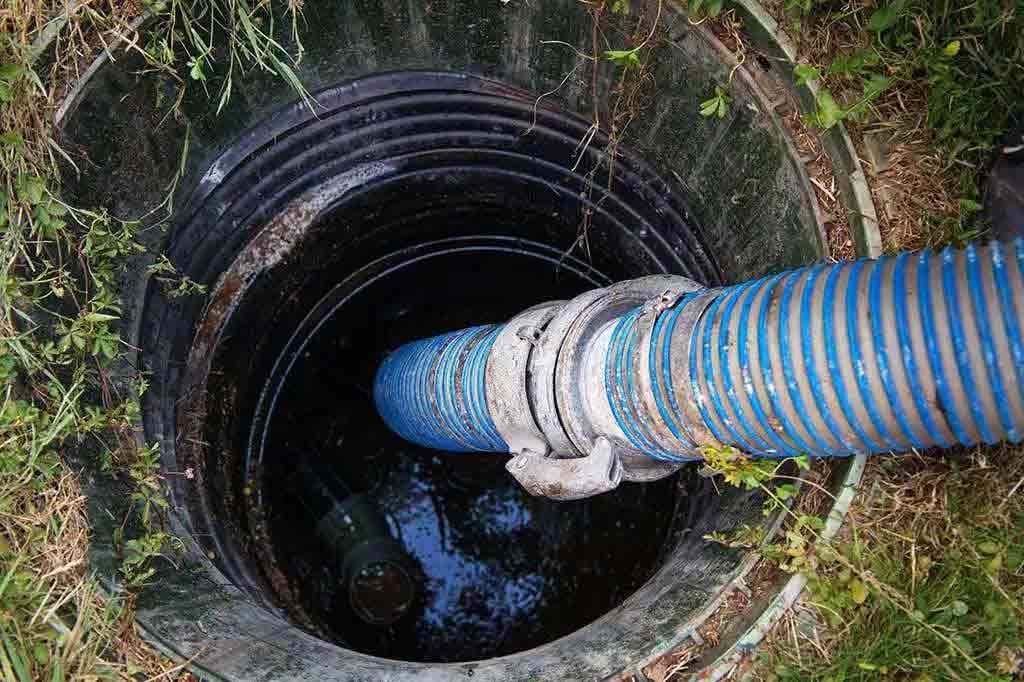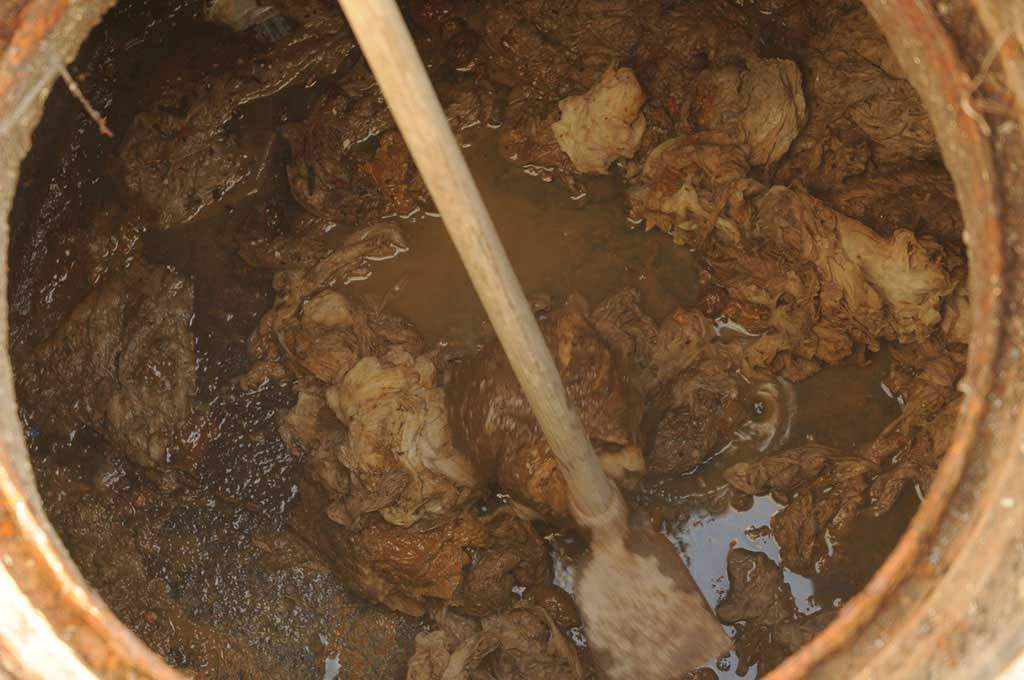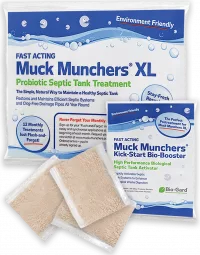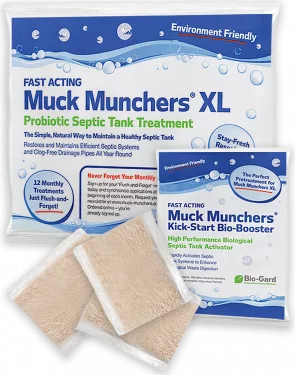Why Might You Have a Septic Tank Crust?
There are several reasons why you can have a septic tank crust on the surface of your septic tank. In this article, we explore what a septic tank crust is, why you may have one and what you can do.

Ok – it’s probably not something you will want to get too close to every now and again, but as you’d probably guess, keeping an eye on your septic tank and septic tank crusts is a good idea, if you want to make sure your sewage disposal remains efficient and safe. On a few past checks you may have noticed a surface crust or scum layer building-up in your tank.
Yes – it can be pretty gross – but what actually is it? Is it something you need to worry about? What can you do if you have a septic tank crust, and will it mean that you need a septic tank pump-out or need to call in the experts to give you a helping hand?
Let’s take a closer look at what septic tank crusting is all about, and why it’s worth keeping an eye on.
What is a Septic Tank Crust or Scum Layer?
On the septic tank surface is a light layer that will normally (and should) float to the top. This tends to contain some fats, oils and greases, and it’s generally a pretty clear greeny, greyish even brown bubbly liquid. It’s basic science that lighter material will rise to the top, too, as the solids will generally sink to the bottom.
Septic tanks have several layers depending on what goes into them. It’s not unheard of when you open up your tank to see this layer floating on the top, and it’s certainly not unusal for you to see a few loose solids, like poo and paper, having floated up along the way.
However, those who are new to owning and running septic tanks might find the presence of a septic tank crust or scum a little bit strange. Surely a septic tank should be sludge all the way down? Not at all, actually.
The top layer is always likely to have a form of scum, though not always. Towards the middle, you should have fluid effluent which is reasonably clear. At the very bottom of your tank should be some thick septic sludge, which – as you can imagine – is most of the natural waste you have discharged from your house into the system.
Is your septic tank showing a layer of crust, causing you concern? Let’s take a closer look at why there might be a crust there at all, and what – if anything – you should be doing about it.
Should Your Septic Tank Have a Crust?
As mentioned, the top layer of your septic tank should normally have some form of scum. This is quite normal and tends to be a bit on the bubbly side and quite thin.
If your septic tank is healthy, then it’s normal to see a scum layer that has a few bits and pieces floating to the surface. For example, while it’s pretty gross, you might spot bits of toilet paper and even a few floating solids. Believe it or not, the way you dispose of your toilet paper in the loo actually impacts on how it appears at the surface of your tank, too. Don’t give it too much thought as to whether you’re a scruncher or a wadder!
You should also be keeping a keen eye on the colour of the septic tank scum. On the whole, again, while gross to look at, you should be seeing a greenish-brown colour to the top scum. It’s not unheard of for the bubbles in the layer to have a greyish tinge to them, too. If this sounds like the top layer of your septic tank, you probably have nothing to worry about.
However, on the odd occasion, this scum layer can develop a hard crust. This is what can cause a lot of concern for septic tank owners, meaning it is well worth knowing what to expect in the long run. Is it even a problem?
What Causes the Surface Crust in a Septic Tank?
The surface crust in your septic tank is very likely going to be a combination of various oils and fats. In fact, there’s a name for it – FOG. FOG stands for Fats, Oils and Greases. These elements are never going to sink into the lower layers of the tank, meaning the only place they are ever going to go is up. And, as is the nature of these fatty liquids, they can have a habit of solidifying.

This is more commonplace than you may think. However, it’s actually likely this will happen if you leave your tank to persist without use for several weeks or months. For example, if you have a holiday home, lodge or chalet with a septic tank and might just not be using it regularly. This, when you leave it to persist, can cause a crust. It’s one of the main reasons why we suggest using your septic tank regularly to prevent conditions like this from occurring at all.
To recap – anything slightly heavy is going to sink down to the bottom layer of the tank. This is your general sludge and solids, . Therefore, while you might get a few floaters and the odd bit of paper wadding floating upwards into the scum layer, a lot of it is likely to be FOGs. That’s simply because it has nowhere else to go – it’s simple science!
Lack of Septic Tank Activity
A lack of activity, such as a complete lack of use, helps breed septic tank crust. There’s less fluid moving around, which means that FOG not only floats up and persists on the upper layer, it crusts over. This is as a result of FOG drying-out. It starts to solidify, which means that your effluent and solid layers below can become sealed in. This now excludes air from entering the effluent via the surface, starving bacteria of vital oxygen.
One way to visualise this is to think about pâte…yes, an odd analogy, but the theory is the same – when you make pâte and pour melted butter on top the butter solidifies to prevent oxidation.
The crust on a septic tank can be pretty nasty to deal with unless you have a strong stomach. It can sometimes be a few inches thick, even quite hard! Therefore, you may need to get some assistance to help you break through it and bring your tank back to full health again.
Do I need to Improve My Septic Crust?
It’s easy to think that a septic tank crust isn’t actually worth worrying about too much. However, leaving it to its own devices will prevent the bacteria in the tank from getting down and breaking-down organic material.
Bacteria need oxygen to survive, just as all living things do. By letting a septic tank crust build-up on the top layer of your septic tank, you are effectively blocking air from getting to them. They’re choking – and while bacteria may not seem like something you want to help out, in the case of a septic tank, they are your greatest allies.
The crust on the top of a septic tank effectively seals off the effluent and solid layers, meaning that the bacteria, with no oxygen, become anaerobic, become far less active and produce obnoxious gases. They’ll then literally cause a stink and at the same time effectively bring your tank close to a standstill.
3 Tips to Prevent Your Septic Tank From Crusting Over?
These 3 tips will prevent your septic tank from further crusting over and reactivate the bacteria to a highly effective aerobic state?
1. Break Up the Scum Layer
The first thing to do right away is to break it up. All it need is to take a pole, rake or hoe and break-up the surface. This will ensure that you are letting more air into your tank, allowing the bacteria in the tank to become more active, to actually break down both the surface waste and that in the lower layers.
2. Use a Biological Septic Tank Deep Cleaning Solution
Use a biological septic tank deep cleaning solution. This should help to digest any FOG in the top layer and eliminate the crust over a period of a few weeks.
3. Reduce Your FOG Discharge
Take care to reduce the amounts of FOG discharged from the kitchen sink, disposing of all used fats, oils and greases in the kitchen waste bin. Using a biological waste trap and drain cleaner, which does not contain ‘chemicals’, will reduce FOG build-up in your tank and ensure your drains run freely, without risk of blockages.
In Conclusion
All in all, solving a septic tank crust issue isn’t a particularly pleasant job. However, it makes sense to keep an eye out for crusts, as they can lead to severe problems for you in the long-run. Draining and fixing septic tank problems further down the line is never fun and will result in unnecessary expense.
Here at Muck Munchers, we understand that septic tanks are facilities people rely on day after day. It’s really easy to let these tanks fall into disarray. What’s more, few people realise that bacteria are actually really helpful when it comes to keeping your tank healthy and proactive.
If you are experiencing problems with a septic tank crust, you will need to break the crust to enable the air to flow in. This should be aided by using a special FOG digesting treatment, such as a biological septic tank deep-cleaning reactivator for problem septic tanks.
Take a look at our range of septic tank products online and learn more about what we can do to help you.










